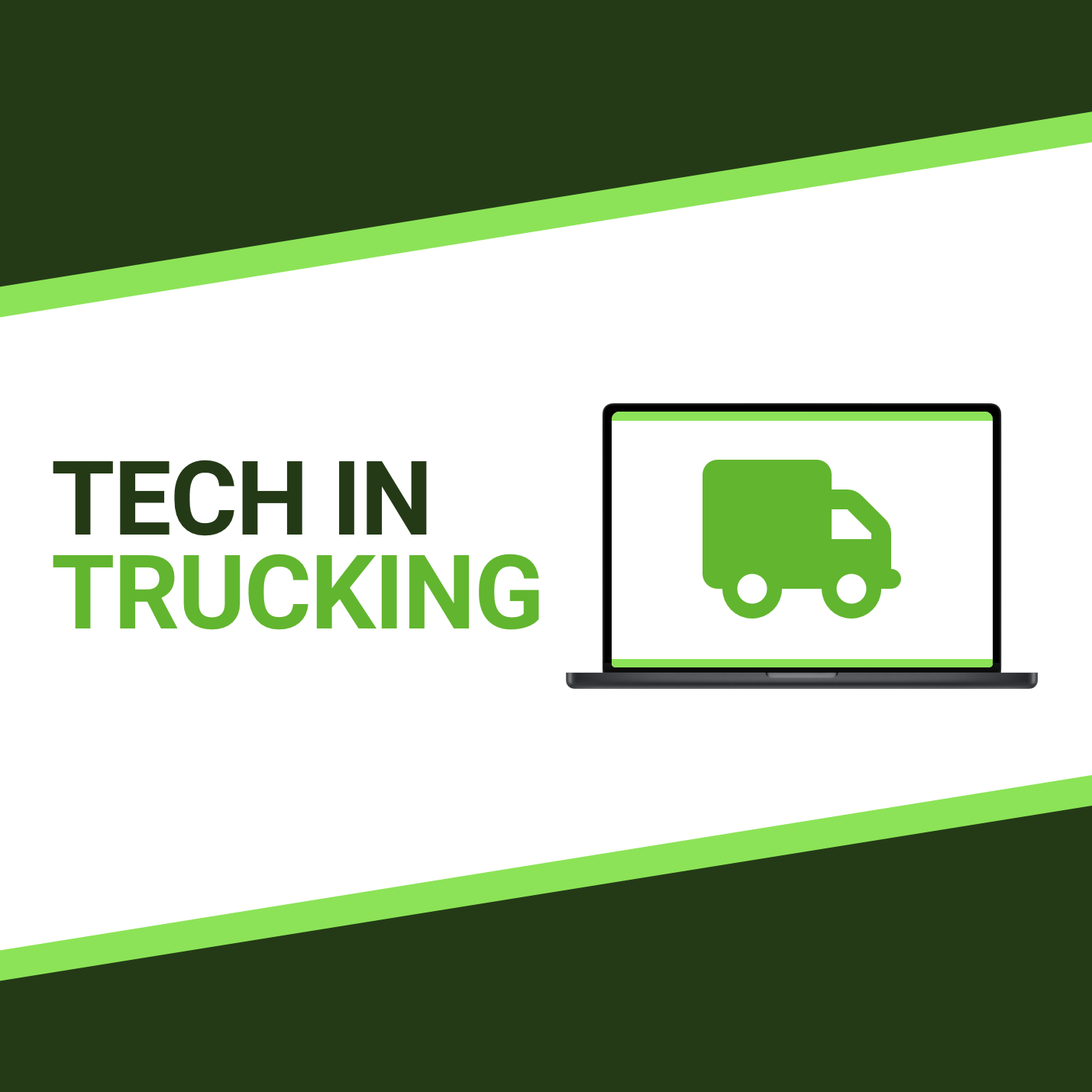The trucking industry is seeing a technological revolution, meaning everything from fleet management to driver safety is becoming more efficient due to tech advances. In this dynamic era, technology provides opportunities for efficiency, automation, and sustainability. For those in the industry, understanding these changes is not just beneficial—it’s imperative for staying competitive and ensuring you meet the industry standard.

Technology’s Impact on Fleet Management
Telematics:
Telematics, also known as fleet tracking or GPS vehicle tracking, is a technology that uses GPS and on-board diagnostics (OBD) to monitor assets. These devices are connected by the Internet of Things (IoT) which means they communicate through a wireless network and can provide detailed information about a fleet’s performance in real time.
Real-Time Tracking
Gone are the days of uncertain ETAs and lost shipments. Telematics software uses data to visualize real-time data on vehicle locations and road or weather conditions, ways to optimize truck routes and deliveries. This level of oversight ensures that any potential issues, such as delays or route deviations, are immediately addressed, maintaining the integrity of the supply chain.
Predictive Maintenance Solutions
Predictive maintenance has transformed fleet management by using data analytics to foresee mechanical failures before they occur. Telematics systems can report on details like fuel low tire pressure, engine light information, and faults. This proactive approach reduces unexpected breakdowns, extends vehicle life spans, and minimizes downtime. By investing in predictive maintenance, companies can avoid costly repairs and optimize their fleets for long-term performance.
Fuel Efficiency and Cost-Saving Measures
In an industry where fuel costs can make or break profitability, technology offers compelling solutions. Telematics systems can report on details like idling, speed, and fuel use. These telematics work with advanced GPS routing, eco-driving training modules to reduce fuel consumption and minimize environmental impact. These innovations not only contribute to cost savings but also position companies as responsible corporate citizens committed to sustainability.
Enhancing Driver Safety and Performance
Electronic Logging Devices (ELDs) and Compliance
Compliance with hours-of-service regulations is a major concern in the trucking industry. ELDs have become a game-changer, automating record-keeping and ensuring drivers adhere to legal limits. This technology protects drivers from fatigue-related accidents, promoting a safer working environment and reducing liability risks for employers.
Onboarding and Document Management
Trucking companies are adopting software solutions for managing employee recruiting and retention. This means documents are seamlessly uploaded, digitized, and updated automatically. They are eliminating the need for paper forms and filing cabinets while centralizing and safeguarding driver records.
Driver Training
Technological advancements extend into driver training and drug testing, areas critical for maintaining high safety standards. Some CDL academies utilize virtual reality (VR) simulators. Companies are also now able to use online portals to administer cheap and interactive training modules instead of sending employees to costly in-person training.
Drug Testing Innovations
Meanwhile, advancements in drug screening solutions deliver faster, more accurate results, ensuring drivers meet federal regulations and safety standards. Full-service TPAs are using technology to remove the burden of drug testing by digitizing how information flows through and standardizing how operations are performed.These innovations are not just about compliance; they’re about building a culture of safety and professionalism within the trucking community.
Artificial Inteligence (AI) in Trucking
Artificial Intelligence is being paired with the previously mentioned technologies to eliminate mundane tasks and process large sets of data. In the trucking world this could save hours each day for a maintenance supervisor, compliance coordinator, or safety manager. AI can read and process documents, alert users of errors, and filter through data to give the user actionable information. For example, a compliance coordinator might use an AI powered platform to upload driver qualification files and check for any errors. Similarly, with Traverse a safety manager saves time when AI automatically manages consortium pools using the testing authority percentages and produces random draws. These are just a few examples of AI stepping in to make these processes more hands-off for these trucking professionals.
Conclusion: Adapting and Thriving in the Tech-Driven Truck
The integration of technology in trucking has gone from trend to transformation. For truckers, employers, and drug test professionals, staying abreast of these advancements is crucial. Real-time tracking, predictive maintenance, and fuel efficiency measures revolutionize fleet management. Meanwhile, ELDs, VR training, and state-of-the-art drug testing elevate driver safety and performance.
In this tech-driven landscape, those who adapt will not only survive but thrive. The future of trucking is here, and it is powered by technology. By embracing these changes, the industry can look forward to greater efficiency, safety, and sustainability.
Contact our team today to see how we’re innovating the trucking industry.